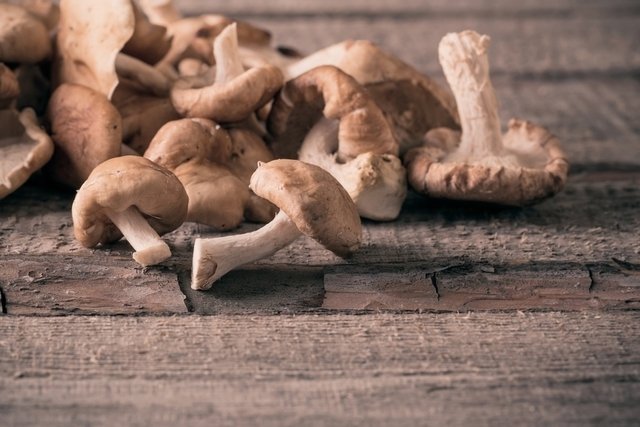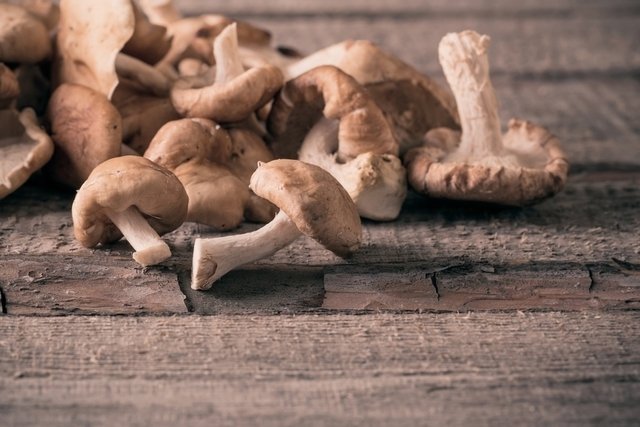Copper is present in water and in some foods such as calf liver, coriander, almonds, chocolate, flaxseed, mushrooms, peanuts and seeds.
Copper is an important mineral for several body functions, such as producing energy, forming red blood cells and even forming and strengthening bones. Furthermore, copper is also an antioxidant, which helps protect cells from possible damage, preventing premature aging and the onset of serious diseases such as cancer.
Copper deficiency in the body is rare, as the amount of copper found in food is sufficient to meet the body’s copper needs. In some cases, there may even be an excessive accumulation of copper in the body, which can cause diarrhea or a metallic taste in the mouth, for example.

15 foods richest in copper
Some of the foods richest in copper are:
1. Grilled veal liver
Liver is a food rich in copper, especially if it is grilled, with 100g of grilled liver containing 12.58 mg of copper.
A diet that includes liver in moderation is important because it is a food rich in nutrients that can be beneficial in the treatment of some diseases, such as anemia.
Understand more about liver steak.
2. Coriander
Coriander can be consumed in the form of leaves, seeds or roots, however the use of dehydrated coriander leaf is the most recommended form because it is rich in copper, since in 100g of dehydrated leaf there are 4.09 mg of copper .
Coriander is an important aromatic herb in food because, like other aromatic herbs, it adds flavor and nutrients to dishes and can be used in salads, soups, rice or pasta.
See how coriander prevents cancer and improves digestion.
3. Roasted cashew nuts
Roasted cashew nuts are rich in copper, with 100g of the nut containing 1.92 mg of copper.
Cashew nuts are excellent for health because they have several benefits, as they have antioxidant properties and are rich in good fats, and can be consumed in snacks, salads or in the form of butter.
Discover 10 health benefits of cashew nuts.
4. Brazil nuts
The Brazil nut is an oilseed that can be consumed raw, in salads, cereals, desserts or with fruit, however it is recommended to consume it in raw form, because 100g of Brazil nuts have 1.79 mg of copper, thus bringing, several health benefits.
Furthermore, it has many health benefits such as lowering cholesterol, preventing some types of cancer, strengthening the immune system or maintaining heart health, as it is rich in proteins, fiber, vitamins and copper.
Find out 8 health benefits of Brazil nuts (and how to consume them).
5. Seeds
Seeds such as sesame and flaxseed contain a good amount of copper, as 100g of sesame has 1.51 mg of copper and 100g of flaxseed has 1.09 mg of copper.
Sesame and flaxseed are excellent foods for a healthy diet because they have many benefits such as helping with weight loss, reducing the risk of heart disease, lowering cholesterol or helping to control blood sugar.
See 7 main benefits of flaxseed and how to use it.
6. Beautiful papaya
In every 100g of beautiful papaya there are 1.36 mg of copper, which makes papaya a good food when you want a balanced diet.
Formosa papaya is a type of papaya and has several health benefits, mainly at the digestive level because it helps with the digestion and absorption of food, and because it is rich in iron, calcium, vitamin K and copper, which are essential nutrients for a correct functioning of the organism.
Discover 8 health benefits of papaya and how to consume it.
7. Roasted coffee bean
Roasted coffee beans, which can be ground and used to make coffee, are rich in copper, as 100g of beans contain 1.30 mg of copper.
The coffee bean has several health benefits, which can be acquired through the consumption of coffee. Coffee has a large amount of nutrients, such as caffeine, which helps combat tiredness, prevent and improve headaches or protect the heart.
Understand 7 health benefits of coffee.
8. Soy flour
Soy can be consumed in the form of cooked grains, flour or through textured protein, and in the form of flour it has an amount of copper of 1.29 mg in 100g of soy flour, which helps balance copper levels in the organism.
Soy is an oilseed rich in fiber, fatty acids, omega 3 and vitamins, which is used as an ally to reduce the risk of heart disease, regulate sugar levels and help with weight loss.
Find out what soy is, its benefits and how to prepare it.
9. Jurubeba
Jurubeba can be used in teas by infusion, tincture or root juice and, mainly, in its raw form it is rich in copper, with 1.16 mg of copper in every 100g of jurubeba.
Jurubeba is a medicinal plant that can be used to treat diseases such as anemia, digestive problems, to treat nasal congestion, or in cooking, to prepare alcoholic drinks.
See what jurubeba is, what it is for and how to consume it.
10. Roasted almonds
Almonds can be consumed in salads, with yogurt, fruit, in desserts, raw or roasted, with roasted almonds being richer in copper, with 0.93 mg of copper in every 100 g.
Almond is an oilseed rich in good fat, proteins, fiber and vitamins, and is very important for health because it helps regulate the intestine, appetite and develop bones in a healthy way and prevents heart disease.
Discover 5 health benefits of almonds.
11. Mushrooms
There are several types of mushrooms, however, Shiitake and brown mushrooms are the richest in copper, since 100g of raw Shiitake mushroom has 0.9 mg of copper and 100g of raw brown mushroom has 0.5 mg of copper and , can be used in salads, pasta or sandwiches.
Mushrooms are good sources of vitamins, potassium, phosphorus, selenium and copper, helping to regulate blood pressure and reduce the risk of kidney disease and heart disease.
See the types of mushroom and 9 main health benefits.
12. Peanuts
Peanut is an oilseed that can be used raw or roasted, in salads, desserts, pasta or snacks. In 100g of raw peanuts there are 0.78 mg of copper and each 100g of roasted peanuts has 0.68 mg of copper, being an important constituent of a balanced diet.
This oilseed is rich in vitamins, proteins and good fats, such as omega 3, which help protect the heart, preventing the onset of heart disease or atherosclerosis.
Find out 9 benefits of peanuts and how to consume them
13. Dark chocolate
Semi-sweet chocolate can be consumed in tablets, in desserts or with fruit and, for every 100g it contains 0.77 mg of copper, which makes it a good ally for a balanced diet.
The best chocolate for your health is dark chocolate because it has a higher percentage of cocoa and other nutrients that help with heart health and protect cells, prevent premature aging and combat high cholesterol levels.
Discover the best chocolate for health.
14. Nuts
This nut can be consumed dry or raw, in desserts, salads or pasta, and in every 100g of nuts there is 0.75 mg of copper.
Walnut is a dry fruit rich in vitamins, fiber, good fats and copper and helps regulate cholesterol, lose weight and increase energy.
See how to consume dried fruits without gaining weight.
15. Oats
Oats can be consumed in flakes, flour or granola, to make cookies, pies, cakes, bread or pasta and contains 0.44 mg of copper in every 100g of raw oats.
Oats are a cereal rich in vitamins, fiber and antioxidants, which help control blood sugar and cholesterol levels and protect the heart.
Understand 5 main health benefits of oats.
Recommended daily amount of copper
The average recommended copper intake for a healthy adult typically ranges between 0.9 mg and 2.7 mg per day. In children, between 1 year and 13 years old, the average copper intake varies between 0.34 and 0.7 mg of copper per day.
What can cause a lack of copper
A low amount of copper in the body is rare, but when it occurs it can cause complications such as anemia, a decrease in the number of white blood cells in the blood, known as neutropenia, or bone disorders, such as fractures.
What can cause excess copper
Copper can also be found in tap water when it runs through copper plumbing. In this case, excessive copper intake can cause a metallic taste in the mouth, excessive salivation, nausea, vomiting, burning in the stomach, gastrointestinal bleeding and diarrhea.

Sign up for our newsletter and stay up to date with exclusive news
that can transform your routine!
Warning: Undefined array key "title" in /home/storelat/public_html/wp-content/plugins/link-whisper-premium/templates/frontend/related-posts.php on line 12
Warning: Undefined array key "title_tag" in /home/storelat/public_html/wp-content/plugins/link-whisper-premium/templates/frontend/related-posts.php on line 13




